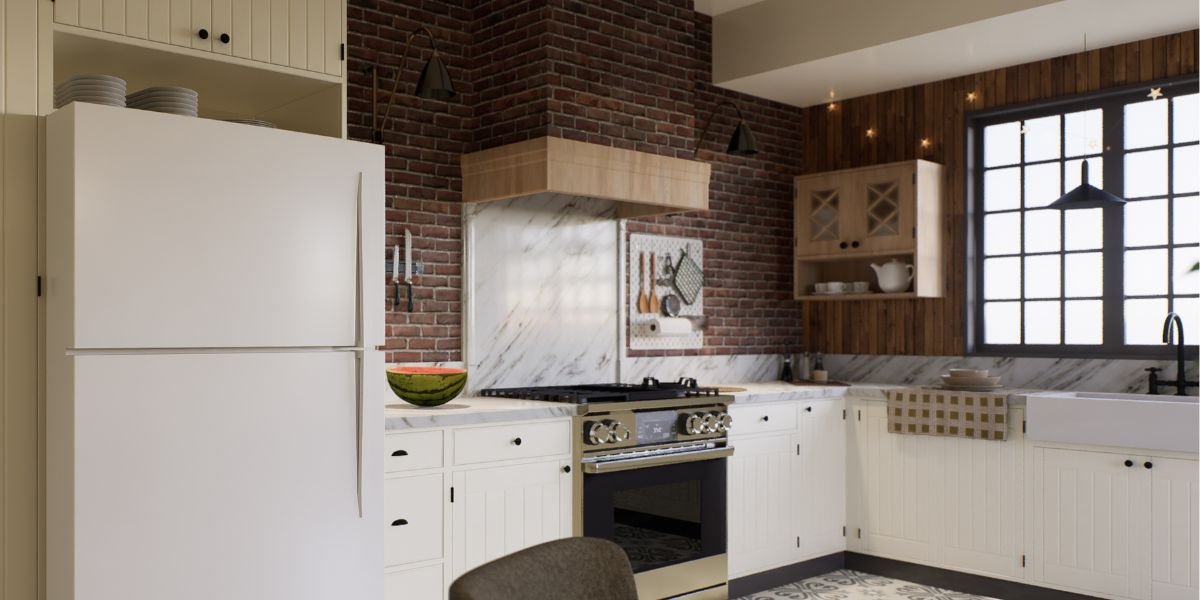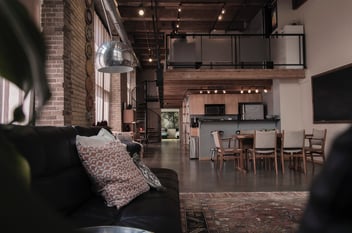4 Min Read
Make Your Cape Cod Kitchen Island The Center Of Attention
Over the past few years an island has been one of the most requested features that people ask for in a kitchen. According to the National Association of Home Builders 80% of home buyers consider an island amust have. An island can fit into many kitchens, even small ones, coming in an endless array of styles and with features you may not have considered. Kitchen islands expand counter space, storage, and function. I’ve never once heard a cook say they had too much counter space.
Designing an Island
A kitchen is often the heart of a home so put a lot of thought into your island design before you build it and you won’t be sorry. Don’t be afraid to consult with a kitchen designer or a very experienced builder to help you fit one into your existing space and your lifestyle. They have a lot of experience helping you decide what will work and what won’t. Nothing is worse than an island that doesn’t function well. If it creates a bottleneck in traffic flow, doesn’t have the extras you need, or even worse, interferes with the kitchen work triangle, your island can cause more problems then it solves.
Proper clearance between the island, cabinets, and appliances is critical for your island to work well. Some of the standard clearances are: 42 inches between your island and surrounding objects to ensure traffic flow. Work station and dining table height should be 36” and 42” high for bar-style casual dining. These numbers are the ideal but rules are meant to be broken. I’ve seen islands with less then 42” between the island and kitchen counters and they have worked fine if well designed. Double check that you can open your appliances like a dishwasher or oven, and still have enough room to move around.
Kitchen Island Function
Many islands act as dining areas, but they can be so much more. Put in a wine refrigerator, ice maker, and warming drawer and you’ve got a terrific buffet/party area. Add a drawer style microwave, stove top, and an oven and you have a fully functional cooking area. A marble top, storage for baking pans, and a elevator shelf for your mixer and you’ve made the family baker happy. Add a butcher block countertop, a sink, and hide away trash and recycling and you have extra prep space. An island can be anything you want it to be!
Once you’ve made the decision on how you will use your island then the island configuration is easier. If your island contains your main sink then it will function better if it also has your dishwasher and pull out trash and recycling bins. If it’s a cooking area you will need ventilation and consider pull out drawers for your pot and pan storage. Think long and hard about how your island will function.
Kitchen Island Size
A recent trend in larger kitchen is two islands, one as a prep area with a sink, perhaps a marble baker’s countertop and a second island that acts as a dining area and a divider for open concept living spaces. However, bigger is not always better. An island shouldn’t be more then 4 feet wide otherwise the center becomes unreachable.
You can still put an island in a small kitchen. They don’t have to be solid, massive structures; think about a tall free standing kitchen table or a console table, long and narrow. To avoid it looking too substantial for a small kitchen think open shelving on the lower portion. That way it still adds counter and storage space, but it looks lighter visually. You can use wicker or wire baskets on the lower shelves to add interest and more usable space.
What if you really want an island but just don’t have enough space in your tiny kitchen? Think rolling cart. It can add valuable counter or serving space and can be rolled out of the way when not in use.
Kitchen Island Extras
The list of things that can be included in your island is endless. Many companies now make drawer-style appliances; refrigerators, dishwashers, warming drawers, microwaves, ice makers, and trash compactors. You can put in restaurant quality features as well; a grill, a fryer, wok area, steam trays, and more. Put book shelves at the end of your island for your cookbook collection, or hang your wine glasses from a rack. I’ve seen flat screen TV’s built into islands that act as a room divider between the kitchen and family living space. Always remeber: good lighting is imperative for your island and so are multiple electrical outlets.
Island Style
Your island doesn’t have to be rectangular so think out of the box. Islands now come in L- shape, curved, round, and everything in between. A straight side on the work/prep area is nice and curved on the seating side helps facilitate conversation for your friends.
There are so many choices for countertops. Granite is great for cooking areas. It’s easy to clean and you can put hot pots and platters directly on the stone. Marble is a favorite of bakers, it stays cool and dough doesn’t stick. Wood on the other hand is great for a dining area of an island, it’s warmer and more cozy looking and it’s softer on your elbows and china. Don’t feel you have to pick a single surface many larger islands have two different surface materials depending on their use.
Today even ready made cabinets come in various sizes, so don’t feel locked into the standard base of 24 inches. Of course, you can always have your builder make you a custom island. I’ve even seen a wine barrel used as an island base so again, be creative.
Another popular trend is the “unfitted” island, which looks more like an individual piece of furniture instead of a standard kitchen cabinet component. They have a distinctive look and furniture detail, often with a different surface then the adjacent kitchen counters. Unfitted islands many times are a different, but complementary color, than the rest of your kitchen.
So have fun with your kitchen island, keep the above considerations in mind when you are planning your island. The end result will be not only a great looking island but a very functional one as well.

.png?width=350&height=350&name=@designremodel%20home%20remodeling%20cost%20guide%20on%20cape%20cod%20(1).png)


